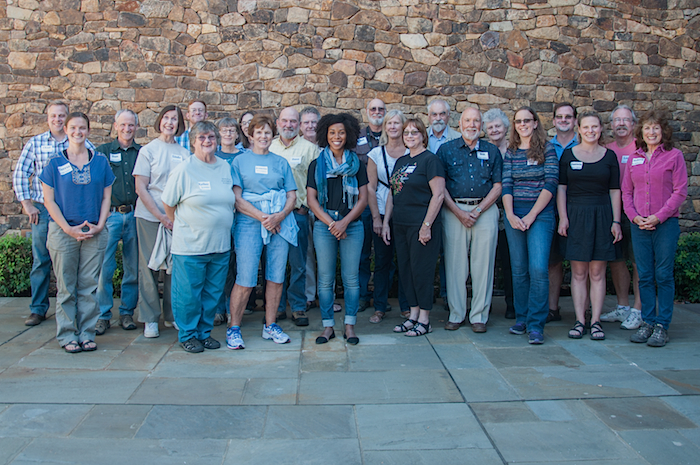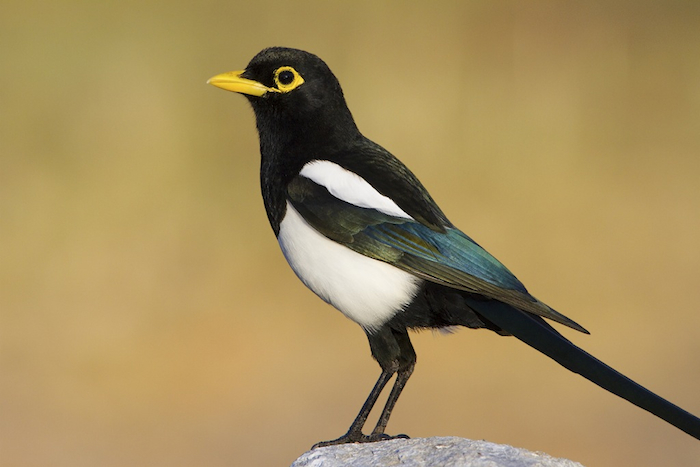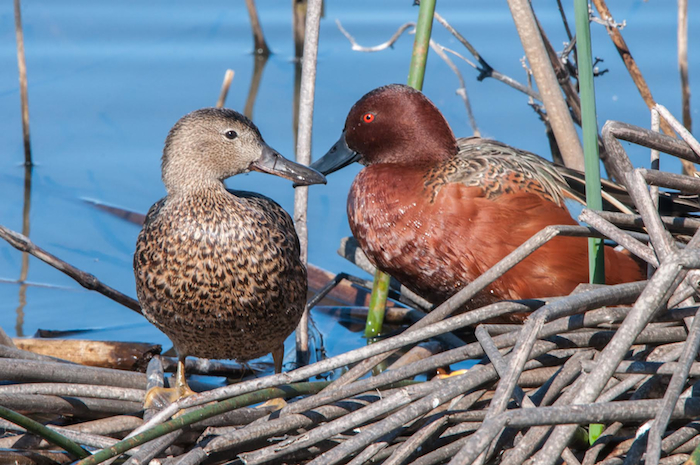
2015 Audubon Northern California Council
The event began with a leisurely bird walk around Lema Ranch, where 14 of the 25 attendees found 41 species in a little over an hour, including two Snowy Egrets previously not on the Lema Ranch Bird List! They returned to the beautiful meeting room at the McConnell Foundation headquarters to find a continental breakfast waiting for them as they tallied their list.
The meeting was kicked off with an enlightening report on the “Status and Nesting Ecology of Purple Martins at Shasta Lake” from our resident fisheries and wildlife biologist and long time Wintu Audubon member, Len Linstrand. Several questions followed regarding the largest of the Swallow species and the possible effects of the raising of Shasta Dam.
Daniela Ogden, Associate Director of Marketing and Communications for Audubon California, gave us an enlightening summation of all the social media opportunities we all may be missing and why they are so important. Her presentation was a call to action for all of us to increase our online presence, thereby increasing the possibility of gaining more chapter members.
Desiree Loggins, Chapter Network Manager, followed with important updates from Audubon California. We are so fortunate to have such an active state organization with great leaders like these.
There are eight chapters that comprise the Northern California Council and seven of those chapters had representation at this meeting. Fortunately we also had a guest speaker from Yolo Audubon Society to give us insight into a recent proposal to create an “Inner Coast Range Conservancy.” Chad Roberts, Yolo’s Conservation Chair, gave an intriguing presentation supporting legislation to create a conservancy to protect this globally significant area which includes world renowned geological, biological and cultural resources; a national monument; and many large, pristine areas that are open for public use. The reaction from the members to his proposal seemed to be unanimously positive.
Our President, Chad Scott, and Plumas Audubon’s Outreach and Education Coordinator, Teresa Arrate, reported on “Chapter Incentives and Programs on Birds and Climate Change.” Important to this endeavor is being active with Audubon Works. There are many resources we can use to further our conservation efforts.
The catered lunch was followed by highly energetic reports from the attending chapters with lively conversation on some very important topics. I think that all participants had some excellent input on ways to increase membership, create a more collaborative organization and steer clear of some possible pitfalls while we try to make the most out of our abilities to conserve our wildlife and wild lands for future generations to enjoy.
***
In the photo from left to right: Chad Scott, President Wintu Audubon; Teresa Arrate, Outreach and Education Coordinator, Plumas Audubon; Dan Greaney, Education Chair, Wintu Audubon; Linda Aldrich, Program Chair, Wintu Audubon; Ryan Keiffer, Peregrine Audubon Member at Large; Esther Cox, Past President, Wintu Audubon; Connie Word, Treasurer, Wintu Audubon; Janet Wall, Conservation Chair, Wintu Audubon; Jeanette Carroll, Recording Secretary, Wintu Audubon; Dave Jensen, President Mendocino Coast Audubon; George Horn, Membership Chair, Wintu Audubon; Desiree Loggins, Chapter Network Manager, California Audubon; Chet Ogen, Board of Directors, Redwood Region Audubon; Jennifer Patten, Program Chair, Altacal Audubon; LeAnn McConnell, Treasurer, Altacal Audubon; Chad Roberts, Conservation Chair, Yolo Audubon; Bill Oliver, Newsletter Editor, Wintu Audubon; Catherine Camp, Conservation Chair, Wintu Audubon; Beth Brockman, Finance Committee, Wintu Audubon; Ken Sobon, Vice President, Altacal Audubon; Daniela Ogden, Associate Director of Marketing and Communications, Audubon California; Larry Jordan, Webmaster, Wintu Audubon; and Rebeca Franco, Education Chair, Mount Shasta Audubon


